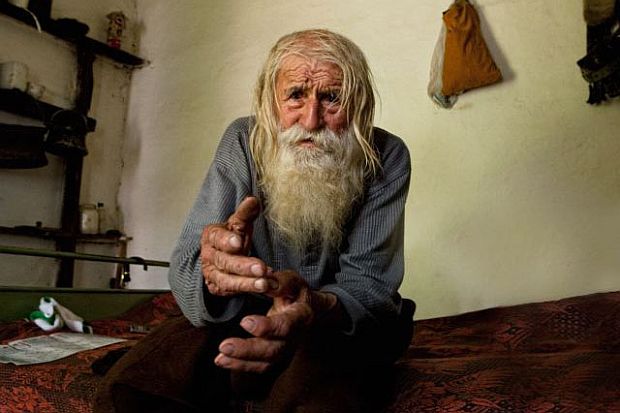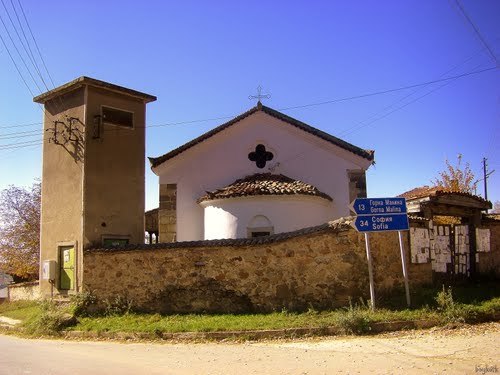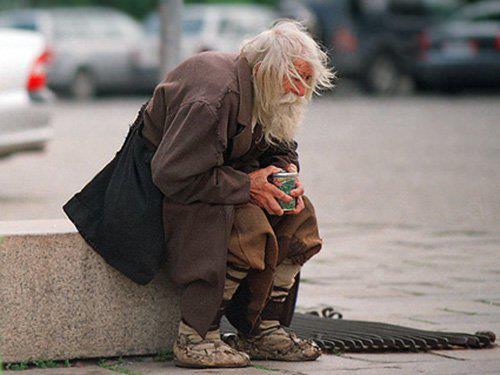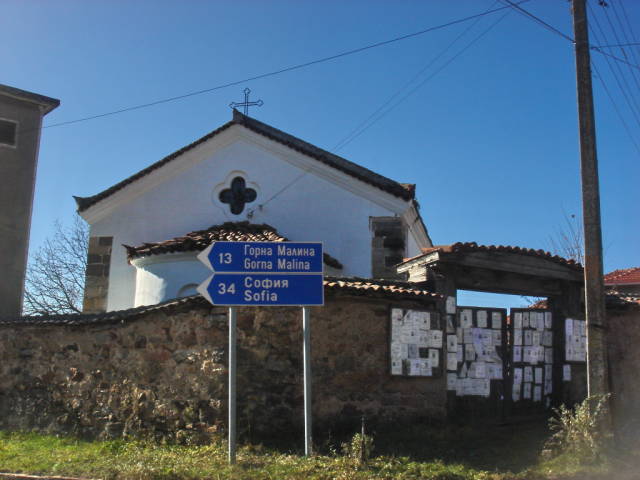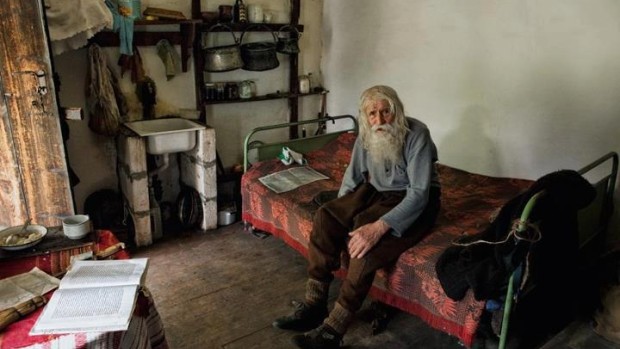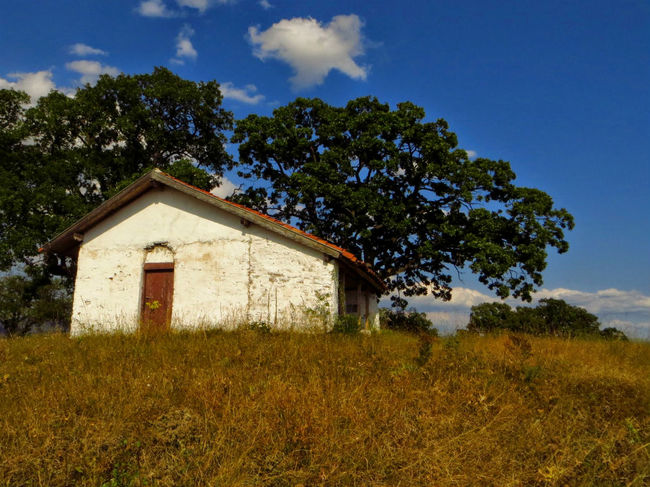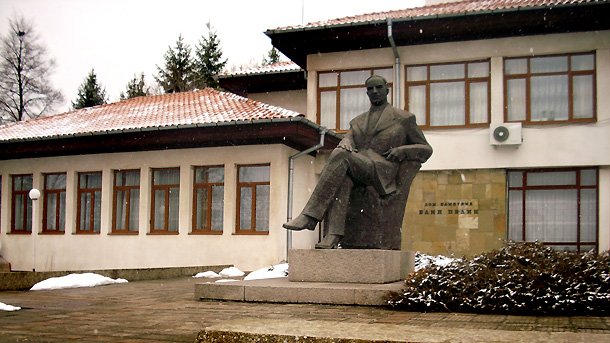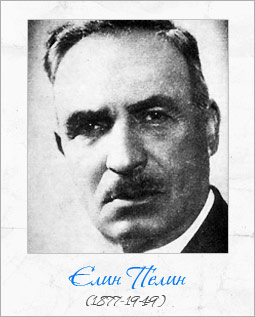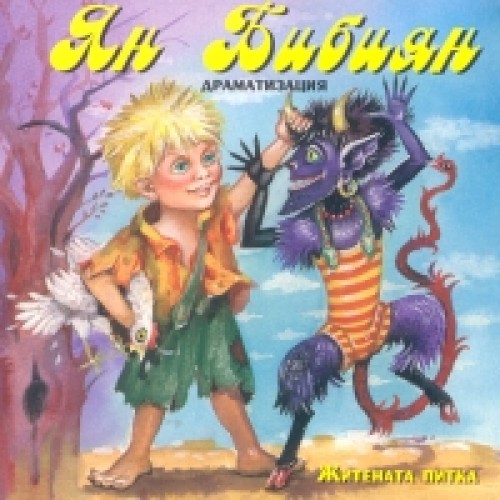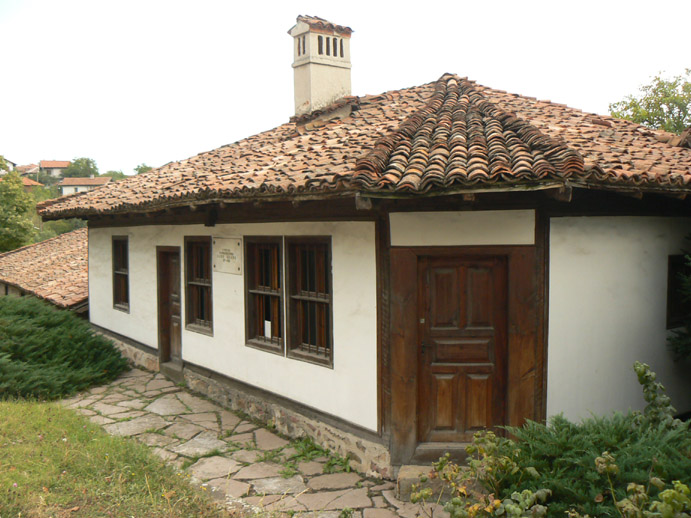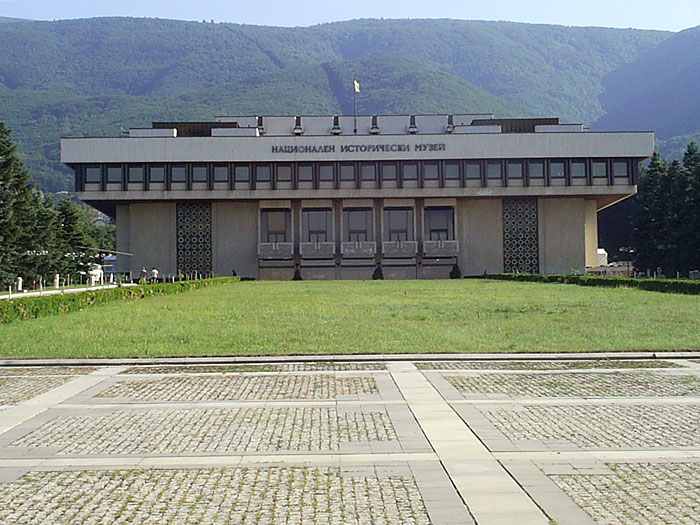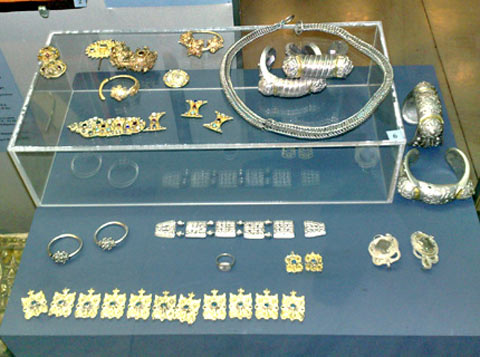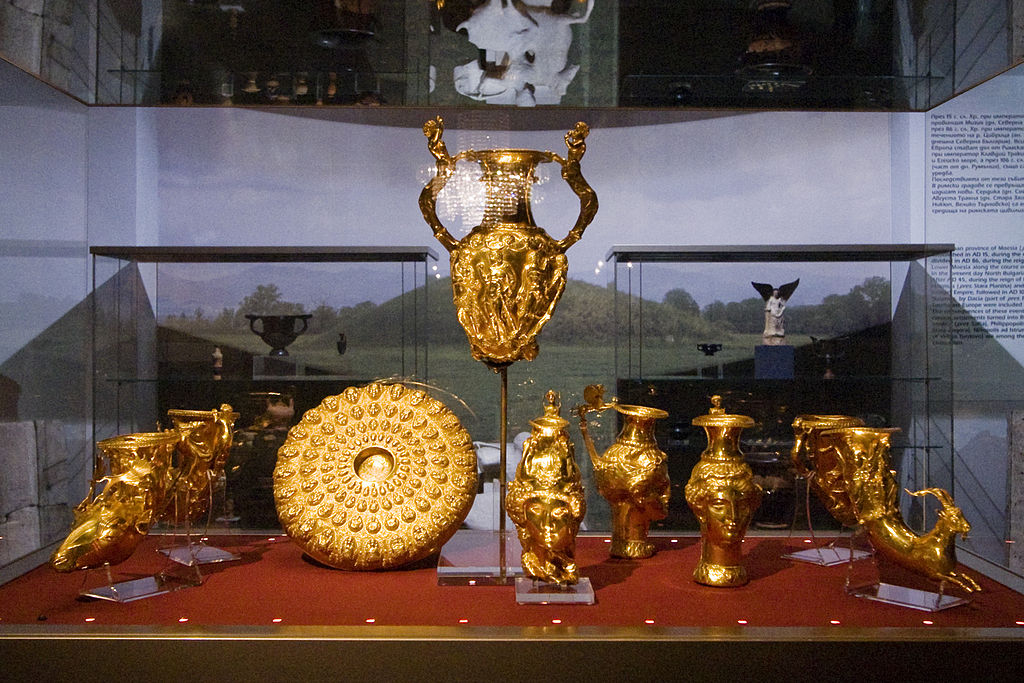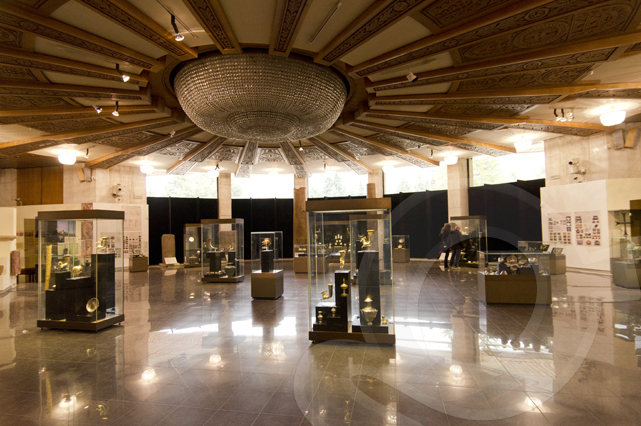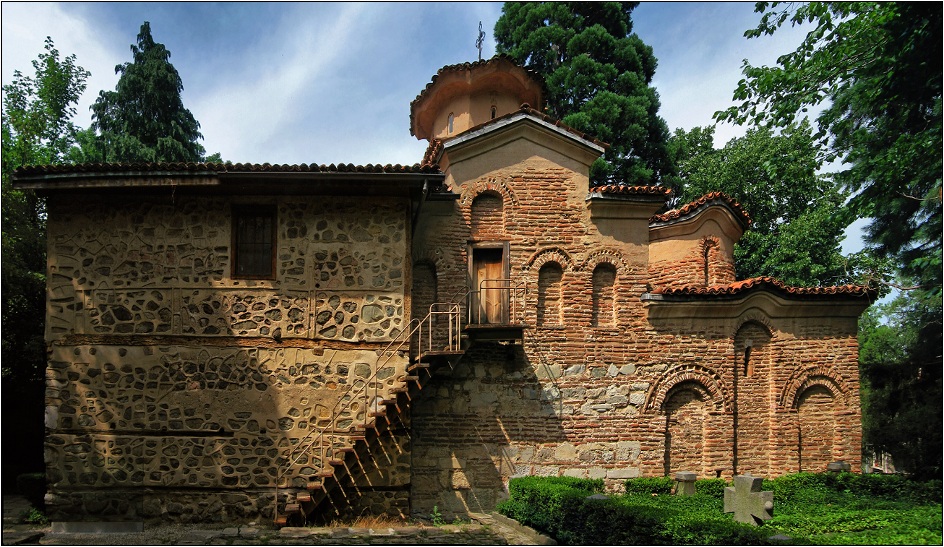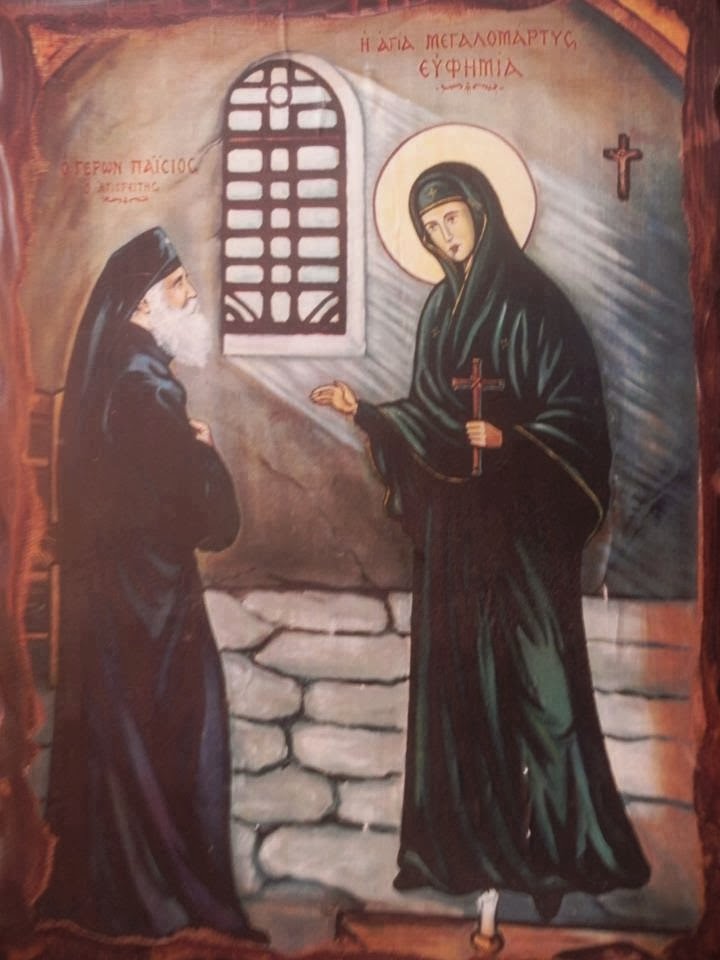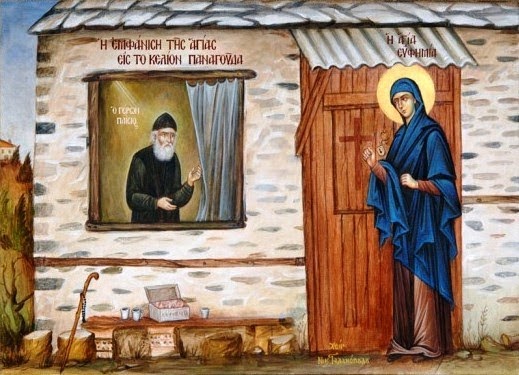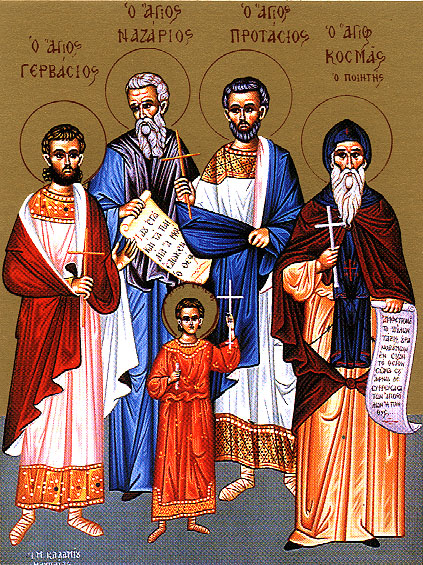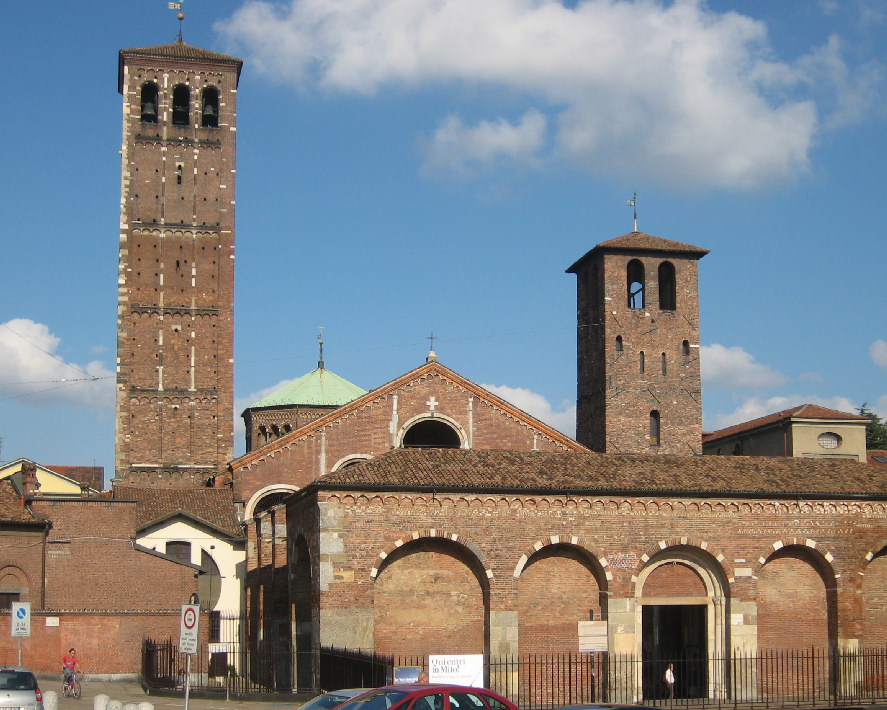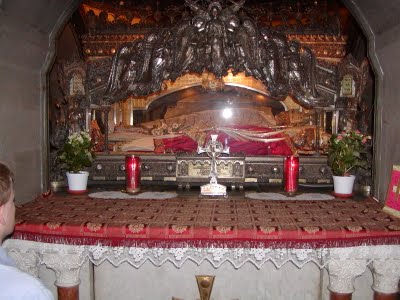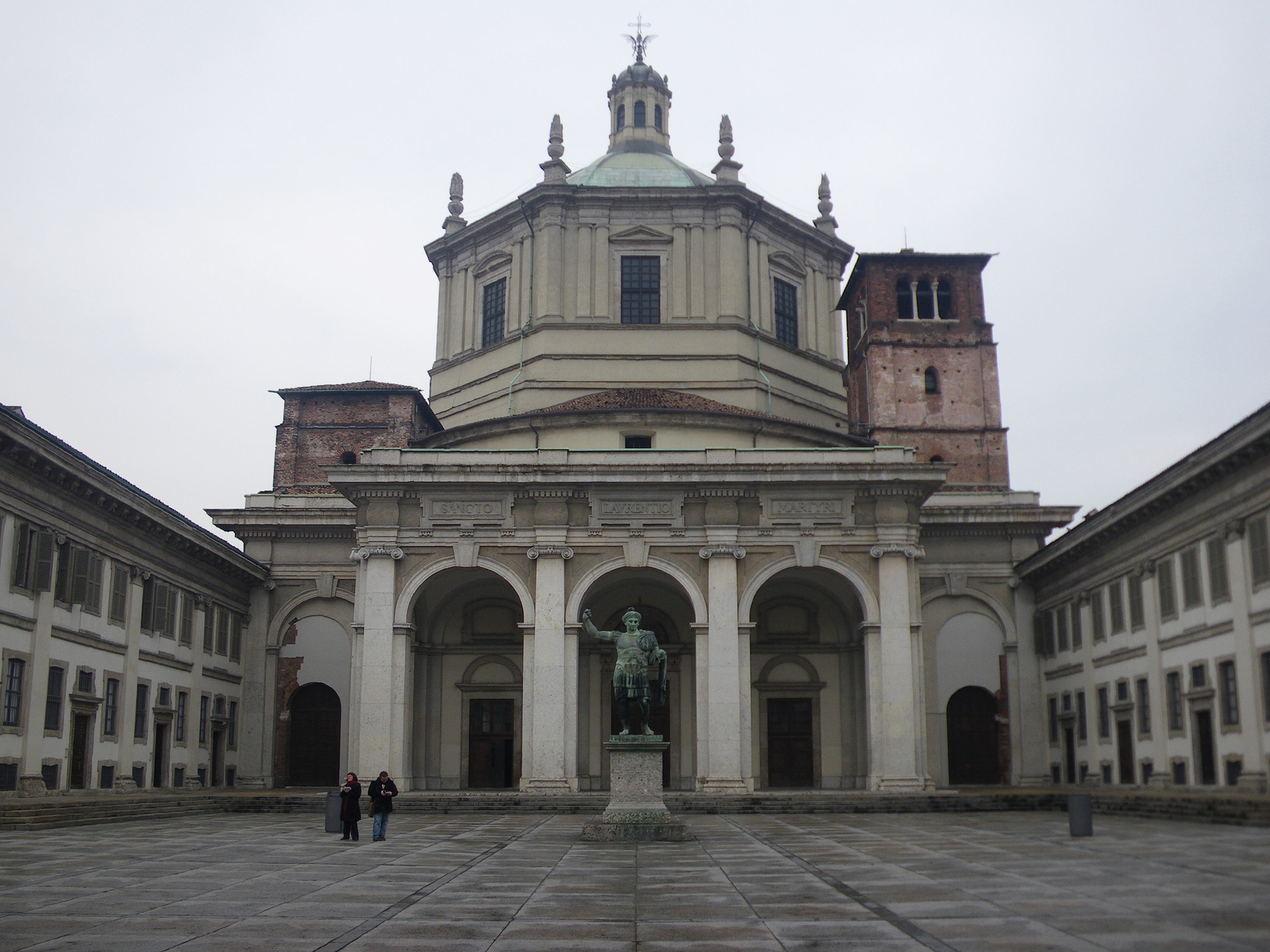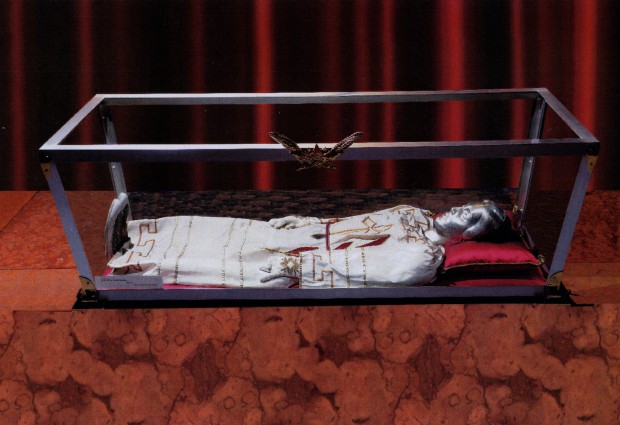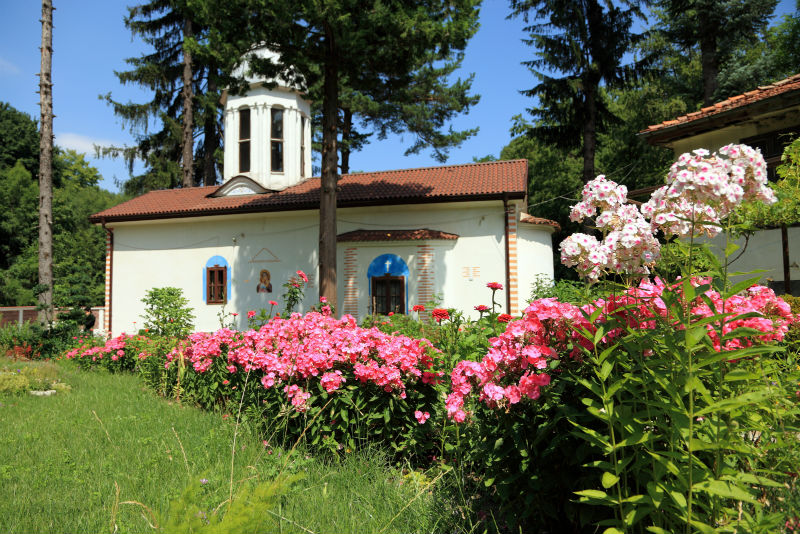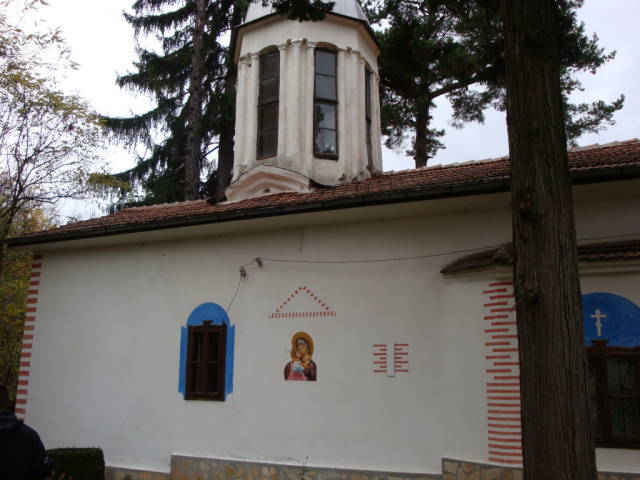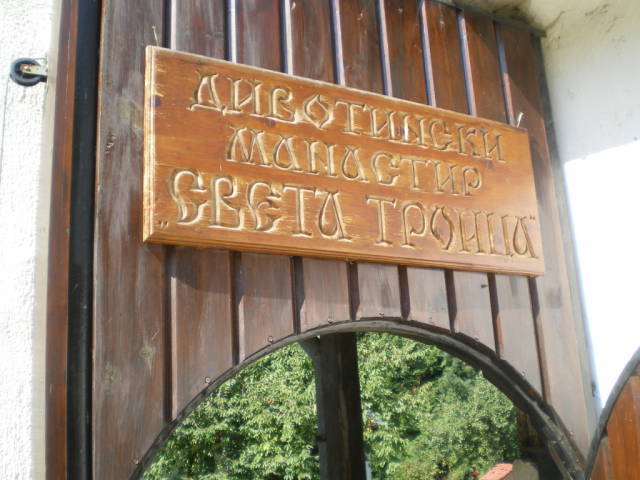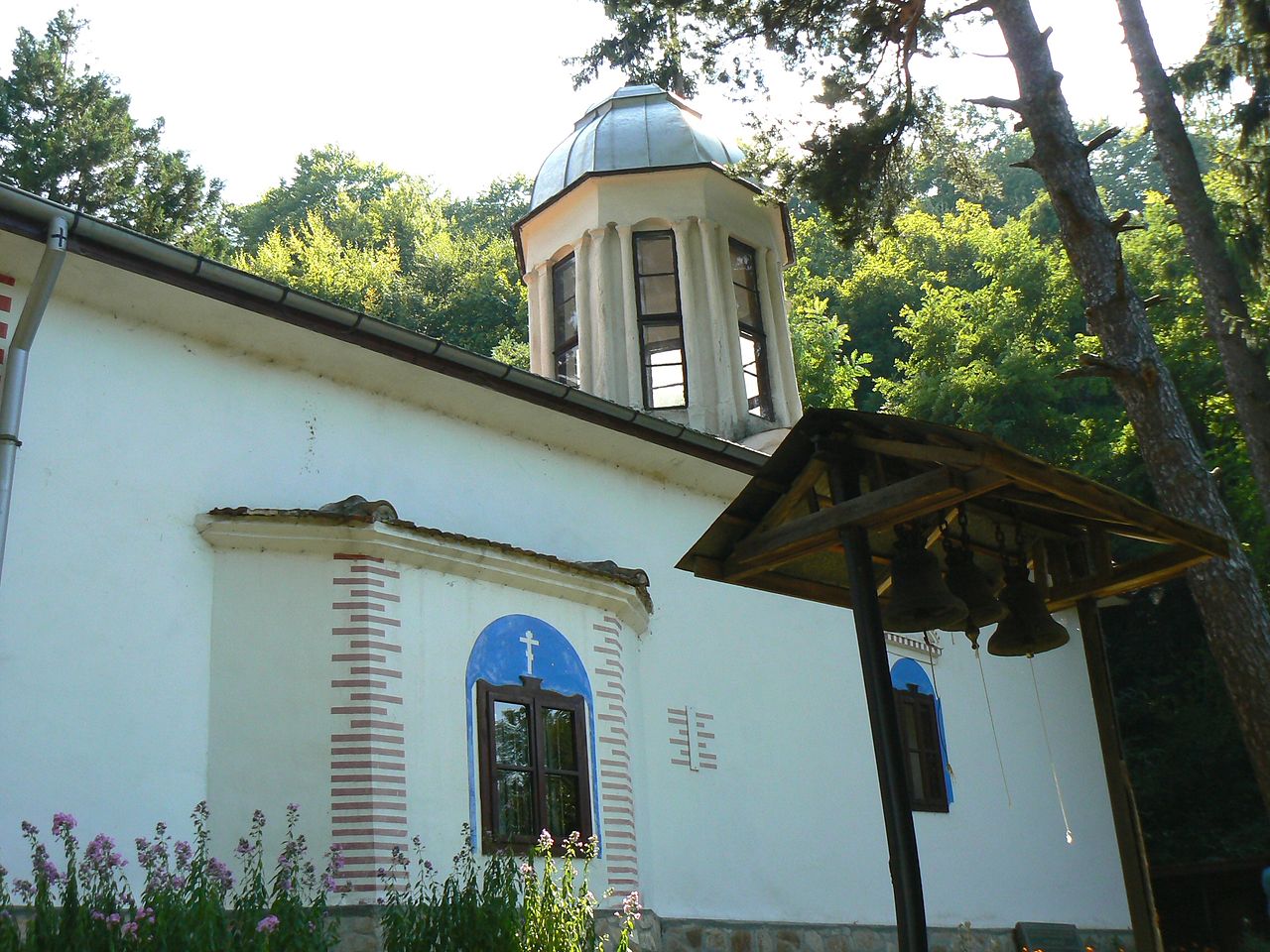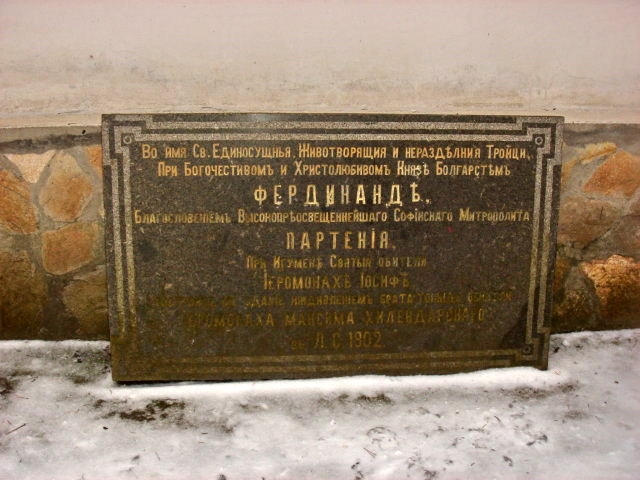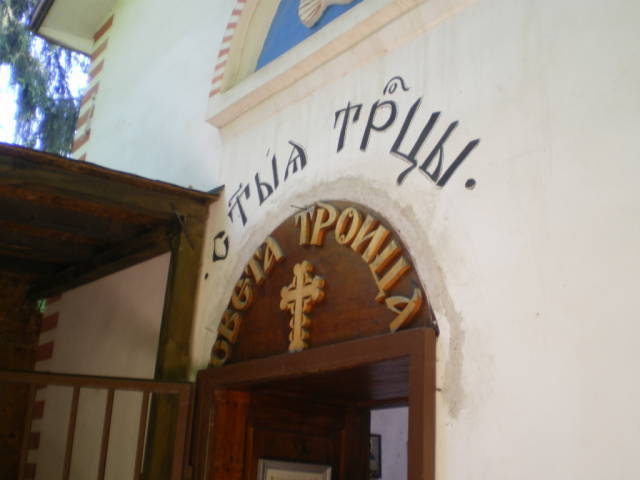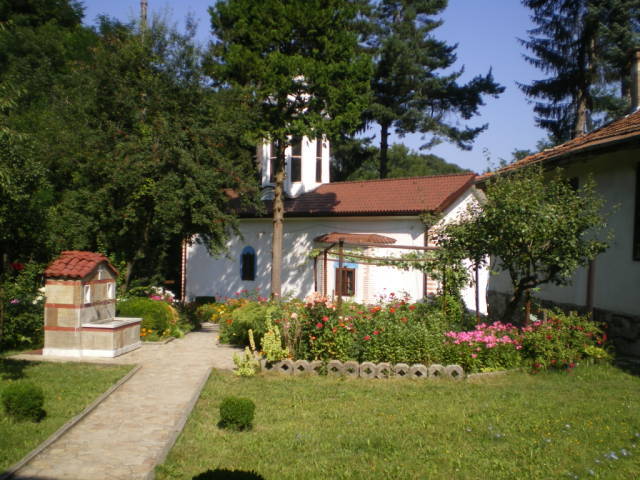Monastestery “Great saint Martyr Marina” or the “Monastery of Doburdja” is situated about 1 km east side from Botevo village, which is situated 8 km west side from the main road between Varna – Dobrich.
It is situated near a vale of a cold water spring.
To reach the holy cloister you should drive the way connecting Krumovo village with Botevo village and you have to turn right nearby the signature pointing the road leading to the monastery. The road leading to the monastery is new asphalt road and is leading straight to the holy place.

In the monastery only 1 monk (who is the abbot) and one novice are living but the perspective is for the monk community to quickly grow as the place seems to be the only active monastery in the Dobrudja region. The abbot is hieromonk father Prokopij (named after a local saint saint Propkopij from Varna) the novice neophyte who is rumored to become monk near Christmas is Luben and these two man achieve to have a daily Morning and Evening Church services as well as Holy Liturgy so any Orthodox Christian around could benefit to have a regular communion and a monastic services if interested.

History
Little is know about the early history of the monastery. A little data is evidencing that the wild woody terrain nearby the miracle healing spring that give the raise of the monastery there was any kind of monk or monastic life in ancient times.
Near the spring are found a remains of old village as well as work and home vessels, as well as an old Christian cemetery.
During the Ottoman Turkish Slavery in Bulgaria the region is called “Dylyp Dere“, some information about the monastery are found in an article of a newspaper Macedonia nr. 39 issued in September 1871 written by Dimitar Stanchev who has been migrated to village Juvenlij (the old name of Botevo), he used to be a teacher and a creater of the local revolutionary committe, writer-patriot and a very close friend to the legendary revolutionaries Luben Karavelov and Hristos Botev.
In this article is said “There in the brushes there is a very cold spring surrounded everywhere by stones with the size of a tomb, the walls and inside is a meter of water which does springs all-time down. The spring creates a river used for crop watering”.
The source also says in Kalyp Dere (today st. Marina monastery) there was an yearly assembly of people in which people from all around Dobrudja come together.

St. Marina Spring has been personally owned by an Ottoman Turk Sali Tapchi (Turkish Bey) and on this place he spend the summer with his harem of woman and this pushed him to decide to build his sarai and once the digging started they found a Cross with a writting Saint Marina.
Once the bey found this is a Christian place he decided to sell the whole region to someone called Lecho from nowdays Botevo, for the symbolic price of 2 horses, 5 goats and 3 mats.
The old man Lecho donated the region to the local Church. Because of any further exact historical writing all known about the monastery is based on local legends which are being confirmed by a real events described by the teacher Dimitar Stanchev.

The two most famous legends regarding the monastery are following.
1. An old grandmother and grandfather were on their way to the city to trade with their caravant and promised to their granddaughter to pick her up, she fall aleep and they decided not to wake her up and on the coming morning after the first cock sing they departed. The granddaughter awake and decided to leave home and went through the woods hoping to catch up the grandparents but got lost and too tired and then she reached the crystal clear spring and to have a rest lay on the cold stones and died there. People found him on the same day but already dead.
It is not known for sure whether the kid has been buried there but on the grave cross there was written here died “12 years old Marina” and that’s how according to the legend the spring took its name “Marina’s well” and local people decided to gather yearly near the spring to pray for the soul of little Marina. Once Bulgaria came under Turkish Ottoman Slavery, Christians being infear by Turkish cancelled the yearly gathering near the spring. The place changed the spring filled up with filth and people started calling the place “feverish well”.
Then follows the story prior said how the Turkish bey came with his harem and started building the sarai just to find the writting “Here died Marina” with a Cross and he declined his new sarai project and sold the place to Christians.
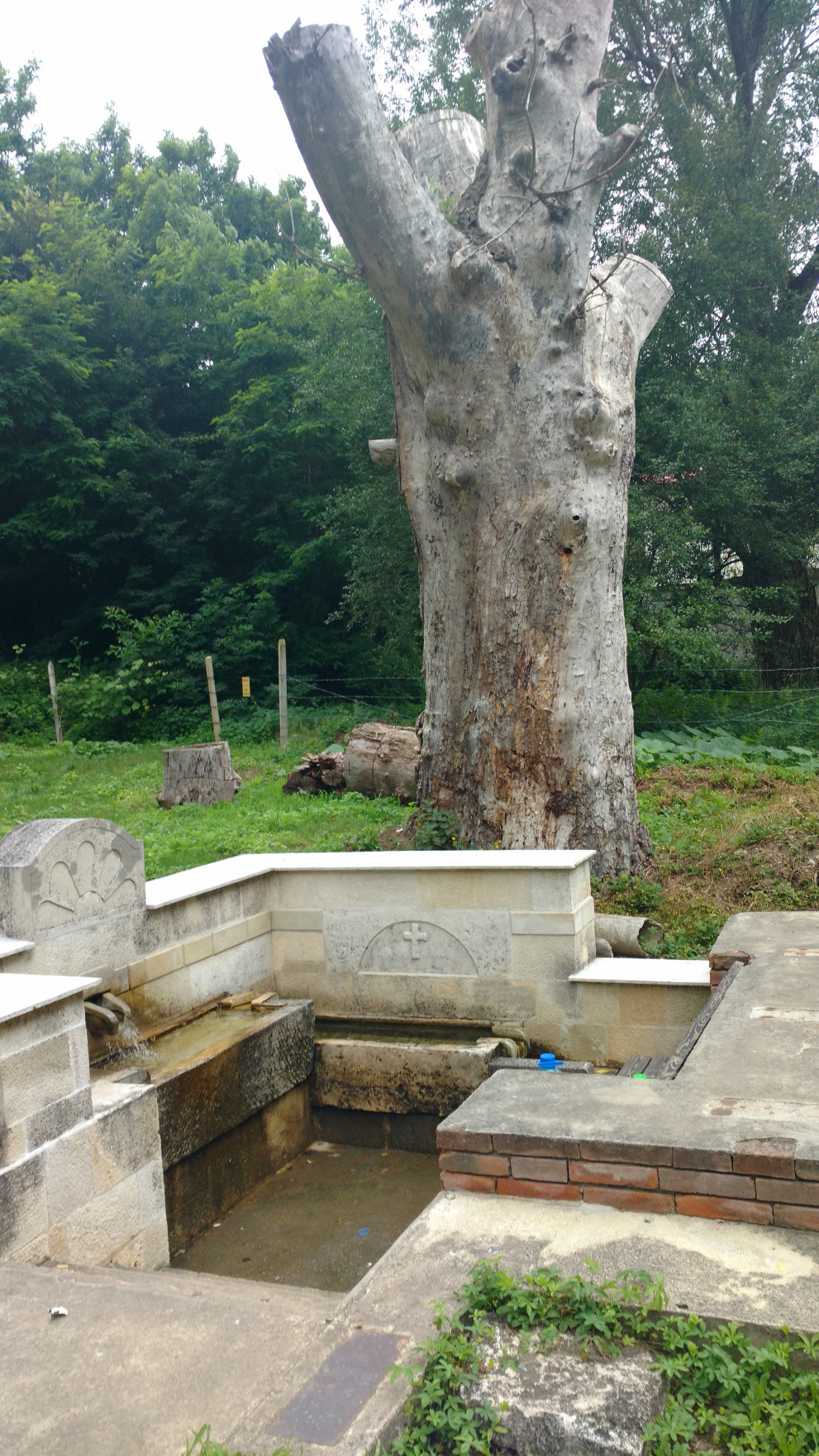
2. The second legend tells us about the miraculous attributes of the holy spring water.
Long time ago during a hot summer when everyone was working filling their carrets with sheaf bundles, bringing them to the nearby stone road, there was a carret with no sheafs but had inside a suffering family in which a suffering mother was holding a kid burning in fever, they were on a way to look for some medicine for their only child. They tried to find a healing already to a local quacks and tried all possible healers without success near the st. Marina spring they stopped for rest and the kid asked for some water from the spring water. But the spring wasso cold that even the ox refused to drink, and the mother scared to give the kid to drink took some water and washed the kid eyes.
A few drops came to the kids mouth and the mother prayed fervently to God to have mercy on her only child. Angel came down smerked the water and the water become healing.
Even before they came to their village the child was healed and they were joyfully laughing telling all the their neighbors about the miracle and the rumor quickly spread around the nearby villages.
In 1882 after the liberation Church members took a decision to build a small chappel near “Marina’s well”, along with the chapel a two open bathings were build one for woman and one for man.
On the next 1883 they build a stone fountain (that were so popular during turkish and post liberation times), the difference was the fountain did not have an arabic ascribing as most fountains had but st. Marina had a cross on it.
After the Church chapel was built the yearly Chritian gatherings so common in the past re-emerged and on 17 July 1900 on the feast of Saint Marina, a local priest Hristos Hadjiev from Botevo village, preached fervently and put a new beginning of the remembrance of the memory of saint Martyr Marina.
In 1929 a second stone wall was build in a spheric form on the top of which was placed the holy cross again.
After the first world war after the Treaty of Neuilly-sur-Seine Bulgaria lost a big part of its territories and South Dobrudja region has been given as a gift to Romania and st. Marina’s monastery was situated only 1 km away from the Romanian border as a result of that many people stopped visiting the chapel St. Marina.
In 1935 the Church board took a decision to build a Church instead of the Chapel. The money for the Church was quickly raised for a very short time and over the holy spring is build a beautiful building and near the Church has been build a special place where the travelling marketers could offer their products. The new Church has been sanctified on 30 july 1935 (on the feast of saint Marina old style calendar) and a Holy Liturgy was served
Тhe water well was sanctified with the rite of sanctification of water by priest Nikola Petrov Apchev serving at the Church of saint prophet Elijah in the village of Botevo.
An old tradition of night vigil on the night before great feasts was also resumed.
According to the Treaty of Craiova in 1940 south Dobrudja was returned to Bulgaria.
At that time king Boris the III-rd was at st. Marina’s region on his way to Dobrich and accidently stumbled on the yearly organized assembly next to the Church and being glad of seeing all the people celebrating together issued a decree to “Build a monastic complex” next to saint Marina’s Church.
King Boris III-rd has personally donated a big sum for building the monastic complex and become the first donor of the monastery because of that time the region was called by local people “The King’s monastery”.
The yearly assembly next to saint Marina monastery’s popularity grow and yearly more and more people attended. Carrets and Caravans visited on saint Marina’s feast coming from all near regions from whole Dobrudja, Varna, Provadia, Valchidol as usual for the time people stayed for the Holy Liturgy then young and elder went to the holy spring and drinked water for a blessing and better health over the year and some of the people take a full shower with the water hoping for a cure from various diseases. Some drinked Rakia other participated in the Horo traditional dances.
Soon came the World War II and Allies and Axis forces soldiers crossed the region sparing the monastery but with the coming of communist (solialist) powers on 9th of September 1944, the water from the holy spring was used for water supplies the monastery was taken by communists and the place desolated quickly, the buldings were in decay, icons, the bell and everything that had any value was stolen. The only remain was a signature on the Church building reading “Saint Marina Church”.
In the 1980s the condition of the monastic temple is terrible in 1981 a nun Valentina from Kalofer Monastery visited the place and worked hardly for the recovery of the Church building begging for help to anyone able to help for the recovery of the monastery.
Initiative is taken by some volunteers by Water and Canals (ViK) Varna for the recovery but noone is allowed to cross the fence of the water providision zone. One of the workers on his own responsibility allowed enthusiastic people to do some repair works and a slow recovery of the place was done.
A help was required by Varna metropolitan Joseph, who most likely being scared by the communistic authorities rejected using an excuse that other Churches in ruins are waiting for recovery …
Following some local people collected donations by nearby citizens and village people around.
People still did not forgot the joyful summer yearly assembly before communism came and wanted this initiative to continue.
With the first collected money brother of nun Valentina, Drumi Spasov, who from the beginning is in the headlines of fighters for the resurrection of the monastery, thanks to him the monastic road was formed, the Church was hedged along with a small coutryard with the help of locals.

Bricks were taken from the home town of Valentina and Drumi Vylchi Dol and concrete was delivered from Devnia concrete factory. Two men on pension participated in smearing the walls from outside and inside. The parish priest father Ivan restored the altar and handcraftly made the iconostasis.
All necessery was provided by people from the near villages. Money are collected with which an icon of saint Marina is bought, which later on
mysteriously disappeared.
A lady Zoya Kiriakova from Varna donated two Greek icons. The old Church bell which earlier was given to a a recycle point in Botevo from a partys antichrstian famous guy was returned by Lubcho Stefanov who kept the bell in himself for many years.
The Church was ready and metropolitan Joseph from Varna was invited to sanctify the Church but he rejects.
The Communist State security interferes and does ruin the sanctification preparations.
The people who were heading the Church with the hope for the sanctification of the Church to occur are stopped before Botevo village, and other people from local villages were prohibited to come near the Church.
The main person father Ivan who initiated the Church gathering is arrested and his faith further on is harsh. He was sent on exile in a distant Dobrich village, where being in great inconveniences he passed away.
Bad years come again for Botevo monastery. The church is vandalized and church belongings stolen. In this terrible period for the monastery the monastery is visited by few local courageous believers mainly on great Church feasts secretly. The Church is locked and controlled by bai Drumi, who preserves the two greek icons.

A good years come for “Saint Marina” monastery when metropolitan Kiril was selected for a bishop of Varna in 1989.
On the next year in 1989 after the democratic changes on the Church feast 17 of July, metropolitan Kiril leads the first for a long time Holy Liturgy.
After the old atheistic regime of persecution of Christians is in the past in the Church there are regular services, the only left is to renew and enrich the material base of the monastery to prepare everything for a monks to inhibit.
For next 10 years in the Church served priests from Varna and in 2001, archimandrite Seraphim, who also provided funds and protection for the place.
Then among the laymen appeared the Christ loving family of Petar and Biserka Petrovi from Varna, with whose fudings a Church restoration works were done and a new living building was built, that is how among the healing water spring and the beautiful small church is formed a beautiful monastic complex. The renewed monastery was sanctified with celebrations by metropolitan Kiril on 17 July 2005 and the common feast region people assembly for Saint Marina’s feast was restored.
Today the holy place, beautifully renewed is a functional monastery with a monk abbot and the small bortherhood lives on people’s mercy (donations). Near the holy spring water there are constantly people with a faith in God and love in the soul which believe in the miracle powers of the holy water.
It is believed that the holy spring cold water helps people recover from severe eyesight diseases and a soul sicknesses.
Sources:
1. Atanas Kazandzhiev, Ivan Kolev, The Monastery “Saint Marina” in Botevo Village, publishing house “Matador 74”, Dobrich 2007
2. Official site of Varna and Veliko Preslav Metropolia – www.metropolia-varna.org










